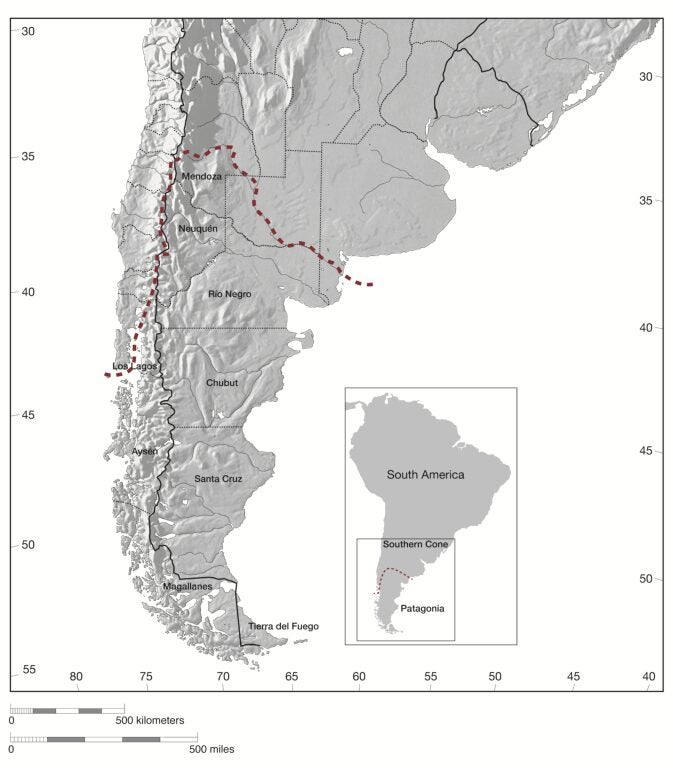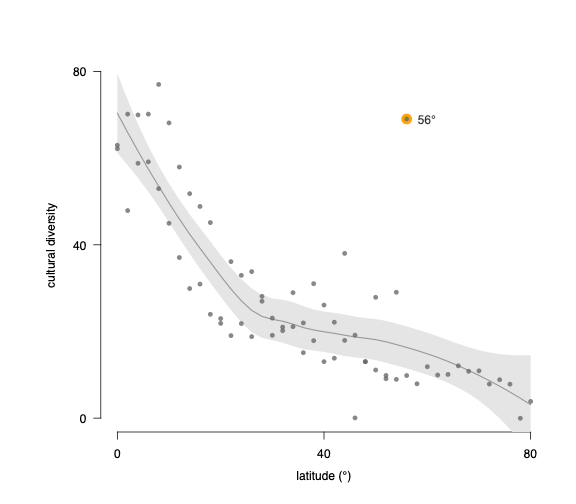Descendants of the Pacific Northwest kelp highway migrants, those who did not turn into and settle in the interior, appear quickly — in archaeological time — to have reached the other end of the Americas 100 degrees of latitude to the south. Patagonia. Here evolutionary developments after occupation (~12,500 BP) turn puzzling. Tierra del Fuego populations diversified into distinct socio-linguistic groups to an amazing degree. At the same time, their tool inventory became depauperate, assessed by a controlled comparison to their now distant but environmentally matching cousins in the Aleutian Islands of Alaska.

Patagonia, the region Garvey covers, extends from southern Mendoza Province to Tierra del Fuego. Figure 1.1 from Garvey (2021: xviii)

These and several more archaeological enigmas set the context for a new monograph on Patagonian prehistory. Raven Garvey deftly combines macro-ecological correlation — her Figure 3.2, illustrated here, an example — with micro-economic (foraging theory) and cultural evolutionary (dual inheritance theory) models and predictions. The book is an excellent primer on how to do synthetic, evolutionary archaeology using methods applicable anywhere.

Cultural diversity is high near the equator and diminishes with latitude, to the north and south. Located at 56 degrees south latitude, Tierra del Fuego is a clear outlier. Figure 3.2 from Garvey (2021: 58).
The Patagonian setting has multiple fascinations of its own (see Chatwin 1977). For anthropologists these are matched by the manner in which Garvey’s evolutionary approach facilitates uncommon but well defended answers to archaeological questions. Tailored clothing commonly is not given the prominence it has here in explanations of migration and settlement. Prolonged drought often is associated with landscape depopulation when, Garvey argues, it instead may foster foraging adaptations that obscure the evidence for continuing human presence on the landscape. Enduring social commitments shaped by foraging and resistance to empire may explain why, at contact, Patagonian peoples were foragers rather than farmers like their neighbors to the immediate north. Solid theory and first hand evidence, novel hypotheses and graceful writing; scholarship to study and emulate.
Garvey, Raven. 2021. Patagonian Prehistory: Human Ecology and Cultural Evolution in the Land of Giants. Salt Lake City, UT: University of Utah Press.
Chatwin, Bruce. 1977. In Patagonia. New York: Summit Books.
